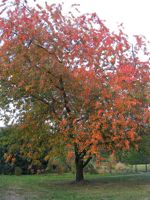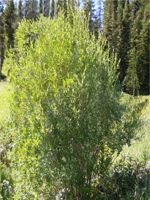Mon-Fri 9am - 5pm Mountain time
Black Cherry vs Bebbs Willow
Prunus serotina
Salix bebbiana
NOT AVAILABLE THIS SEASON - MIGHT RETURN
Black Cherry is common in eastern North America but a rare find elsewhere. This tree is shade tolerant and is often found in old fields, forest openings, and along fencerows.
The fruit is edible and is commonly used to flavor rum and brandy. It is also edible and often eaten fresh or used in wine or jelly. Black Cherry trees typically begin producing fruit when they are 10 years of age.
Black Cherry wood is a rich reddish-brown color and is strong, making it valued in cabinetry and woodworking. It is often used in reclamation as well.
The leaves can poison livestock as they contain cyanide derivatives and precursors. However, many have noted that deer still seem to browse their trees with impunity and birds and other animals eat the fruit when available.
This large shrub is native to all of Canada and most of the United States. Its leaves are green on the top and grey on the bottom, and it produces catkin based flowers and non-edible fruit which appears very similar to a group of pine needles.
Bebb's Willow is foraged for by many species including elk, hares, beavers and various birds. It is commonly used to prevent erosion and protect aquatic environments due to its preference for shady, moist environments.
Black Cherry Quick Facts
Bebbs Willow Quick Facts
Toxicity: bark and wilted leaves toxic to livestock

